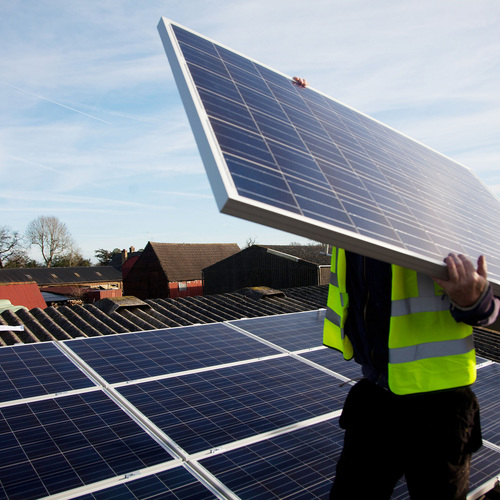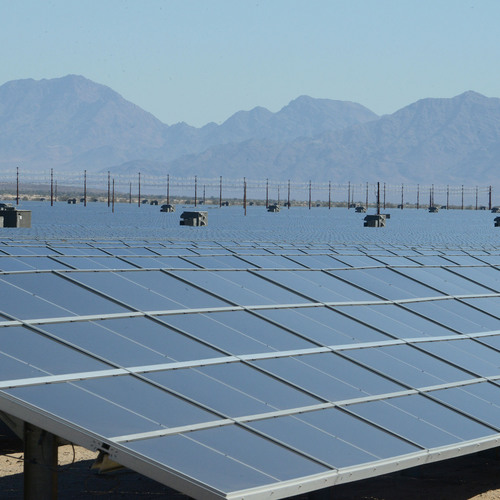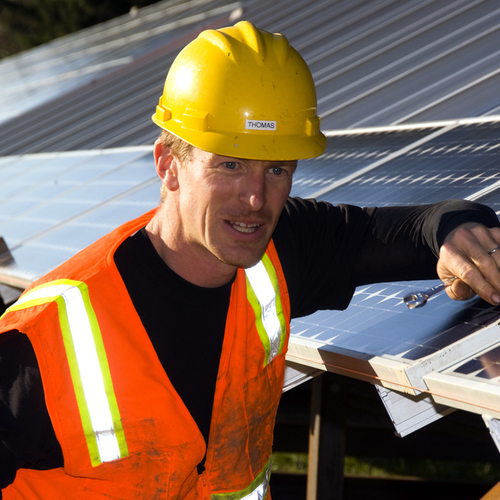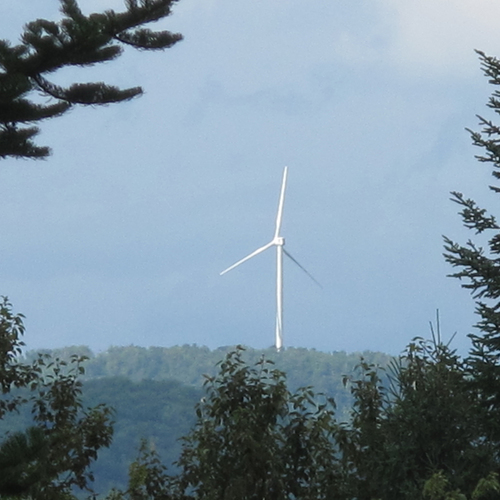
Image Credit: U.S. Army Corps of Engineers / CC / Flickr
California solar jobs hit a record
More than half the jobs that the U.S. solar industry added last year were created in California, where the total number of employees in the solar industry now tops 75,000.
The California Solar Jobs Census report said that more than 20,000 jobs were added in the industry last year alone, The Los Angeles Times reported in an article. Solar workers now outnumber all workers in all jobs in the state’s five largest utility companies combined.
Nationally, the number of solar jobs went up by more than 35,000 last year to reach a total of nearly 209,000. Andrea Luecke, president and executive director of the Solar Foundation, which authored the report, said that half the states in the country have at least doubled the number of jobs in the solar industry since 2012, The Times said.
Driving the expansion of the solar workforce is the record growth in solar capacity. Installations were up by 20% over the year before, with 7,400 megawatts in new capacity added last year for a total U.S. capacity of 27.5 gigawatts. That, the report said, is the equivalent of about 54 coal-fired power plants.
California is still the largest solar market in the U.S., although the growth in new installations slipped slightly from 2014 to 2015.
Spray foam manufacturer dropping HFCs
Demilec, the Texas-based manufacturer of spray polyurethane foam insulation, says that it will phase out hydrofluorocarbon (HFCs) blowing agents and introduce an alternative with a much lower global warming potential (GWP).
In a written announcement, the company said it would introduce spray foam using a hydrofluoroolefin (HFO) blowing agent by the middle of this year and would complete its transition by 2017.
Demilec will join Lapolla Industries, also based in Texas, in offering closed-cell spray polyurethane foam made with an HFO blowing agent. Other manufacturers also are making the switch in anticipation of tougher rules from the U.S. Environmental Protection Agency.
Honeywell, DuPont, and Arkema all make HFOs. Products like Honeywell’s Solstice have a global warming potential of less than 1, about the same as carbon dioxide, compared with GWPs of 1,300 for some types of HFCs now in use.
A type of HFC is used to manufacture extruded polystyrene insulation (XPS) insulation, which makes the rigid foam less attractive environmentally to many green builders than the alternatives. The U.S. Environmental Protection Agency wants the industry to switch to HFOs, but manufacturers have run into production snags and complain that the government’s timetable is too aggressive.
New foundation could lower concrete needs for wind turbines
Each new utility-sized wind turbine sits on a 9-foot-thick foundation containing some 300 cubic yards of concrete, 30 to 40 truckloads worth. Placing the concrete is not only expensive, but it’s subject to the vagaries of weather, and none of the concrete is recoverable at the end of the turbine’s service life.
RUTE Foundation Systems and researchers from Portland State University are developing an alternative that reduces the amount of concrete by 75%, lowering costs, reducing C02 emissions, and speeding up construction, according to Oregon BEST, a non-profit agency that provides help for technology startups.
RUTE founder Doug Krause said that components for the assembly of “anchored grade beams” are designed so they can be installed as soon as they’re delivered — unlike the ready-mix concrete delivered by truck that must cure before a turbine tower can go up. Components are made in a manufacturing plant and are three times as strong as cast-in-place concrete, he said.
The production of cement, which is the binder in concrete, is a major consumer of energy and a significant contributor to carbon emissions around the globe. Each 60-foot-wide turbine foundation contains some 2 million pounds of concrete.
The system will include post-tensioned grade beams connected to a central hub. RUTE is working with a university professor on ways to monitor how much beams flex in different soil and weather conditions, and also has enlisted the services of Oregon structural engineers and a Colorado bridge engineering company.
There was no word on when the project would be ready to move from the lab and into the field for further study, but Krause said that the foundation system would be able to save as much as 6 million pounds of carbon emissions in a single wind farm.
Rule could mean CFL phaseout
A new Department of Energy proposal could mean the end of the line for compact fluorescent lamps (CFLs), E&E Publishing says in an online report.
The DOE proposal in part sets an efficiency standard for both CFLs and LEDs that only LEDs will be able to meet. Andrew deLaski, the executive director of the Appliance Standards Awareness Project, says that the end result is that “after 2020 CFLs are going to go away.”
The rule also will increase the minimum efficiency requirements for incandescent light bulbs to 45 lumens per watt, as originally required by a law passed in 2007. It appears unlikely that manufacturers will be able to develop incandescent lamps that achieve 45 lumens per watt.
GE already has announced it would stop making CFLs for the U.S. market and devote all of its efforts on LEDs. Retailers including Sam’s Club and Walmart also are moving away from CFLs in favor of LEDs.
DOE plans a public hearing on the plan April 1.
Weekly Newsletter
Get building science and energy efficiency advice, plus special offers, in your inbox.















3 Comments
Good riddance
CFLs are terrible. I wonder if as a part of this transition, we can get rid of the horrible GU24 bulb bases that California unleashed on an unsuspecting world.
We need 100W LED replacements
We need 100W LED replacements at a good price, of course it will take time, but when that time will come is anyone's guess. In Canada they are still mighty expensive and not very common.
I hope the HFCs transition becomes industry wide so that we are not second guessing which one we are getting and the alternative does not have a hidden side effect we are not yet aware of.
100 W LED replacements
Here's a Philips 100 W replacement for $15 in Canada. I think that's a pretty good price for 1500 lm and 11,000 hrs life.
https://www.homedepot.ca/en/home/p.led-145w--100w-a-line-a19-soft-white-non-dimmable-2700k.1000830763.html
Log in or create an account to post a comment.
Sign up Log in